Discussing tent pegs
Pulled tent pegs could ruin any event. Strong winds, hard ground, or wet/soft ground could make any tent fall.
Trying to summarize tent peg insights from more than 25 years of experience of medieval events is hard. What tent pegs are good depend on the type of ground, the weather, the tent type, and what type of material you've got at hand.
Modern tents are generally low and lightweight so they don't need very sturdy tent pegs. Medieval tents however, often are large enough to be used at sails in the winds. The stronger the winds, the stronger the tent pegs need to be.
Winds are not the only challenge for tent pegs. Rains often makes the soil so soft tent pegs gets pulled easily. The combination of rain and winds is any reenactors nightmare.
A good tent peg should be easy to hammer down, easy to pull when needed, and sit securely in all types of terrains and weathers.
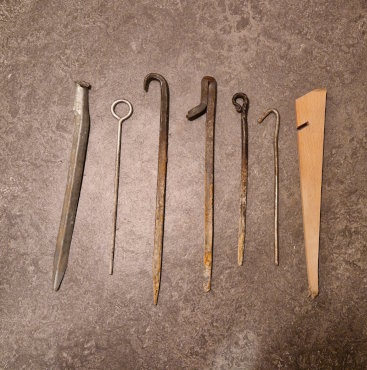
Tent pegs may come from different materials and they all have their pros and cons.
Wood
Pros
- Easy to craft
- Cheap
- Lightweight
- Good for soft soil
Cons
- Hard to hammer into hard ground
- Wears quickly
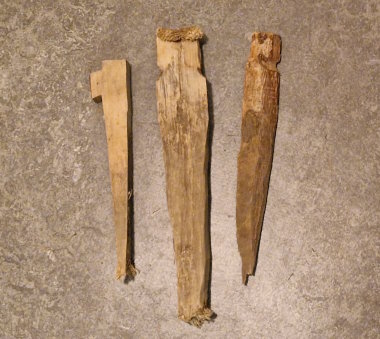
Just using a piece of firewood with an ax produces a quick and useful tent peg. The wide surface in the ground is good with strong winds if the soil is soft enough. That type of soil is typically encountered in grassy or mossy places, and not too dry places.
Wooden pegs typically has to be shapened with a knife or axe from time to time. Don't use your best axe since there are dirt (soil, sand) on the pegs that is hard on your tool edges.
Iron/Steel
Pros
- Sturdy and good for hard soils
- Easy to hammer straight when crooked
- Fits tight tent loops
- You could use two of them (crossed) in each tent loop for extra strength even in tight tent loops
Cons
- Everyone doesn't have a forge
- Lesser strength for soft or wet soil due to small diameter
- Quite heavy
- Harder on tent loops and ropes than wooden ones
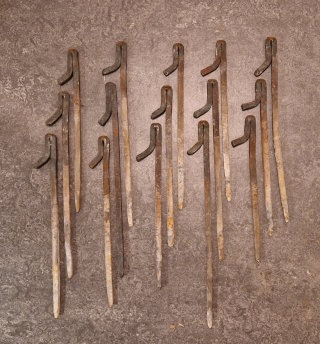
At a crafts camp 2023 I found one participant who had the type of pegs displayed above. Since then I've produced a lot of these and they have some advantages. They don't bounce that much when you hammer them down since the force from the blow is radial and quite centered. If extra reinfocements are needed you have an upper piece above the rope fastening to use. One other important aspect is to not make them too pointy since this will make them bend when encountering a rock when hammering them down.
Creating my (presently) favourite type of tent pegs
Photo cred for the photos below goes to talented Dag Areteg Almgård.
Material
Starting off by heating up the end of a 8 or 10 mm sqare iron rod. Thinner material than that will rarely do and with heavier material you are more likely to hammer it all in one heating.
Hammer the angle to hold the rope from slipping
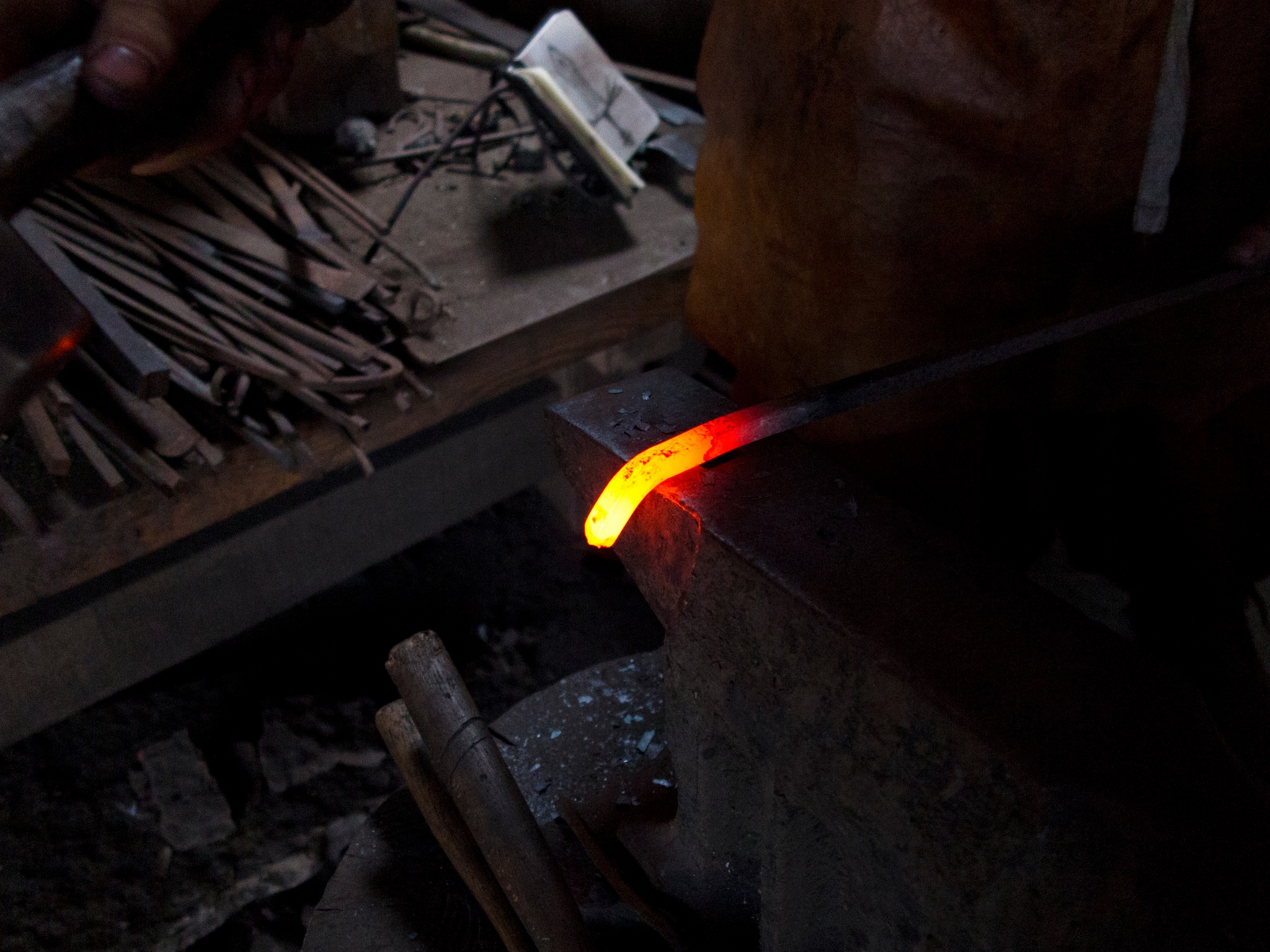
Make a bane for hammering the tent peg down
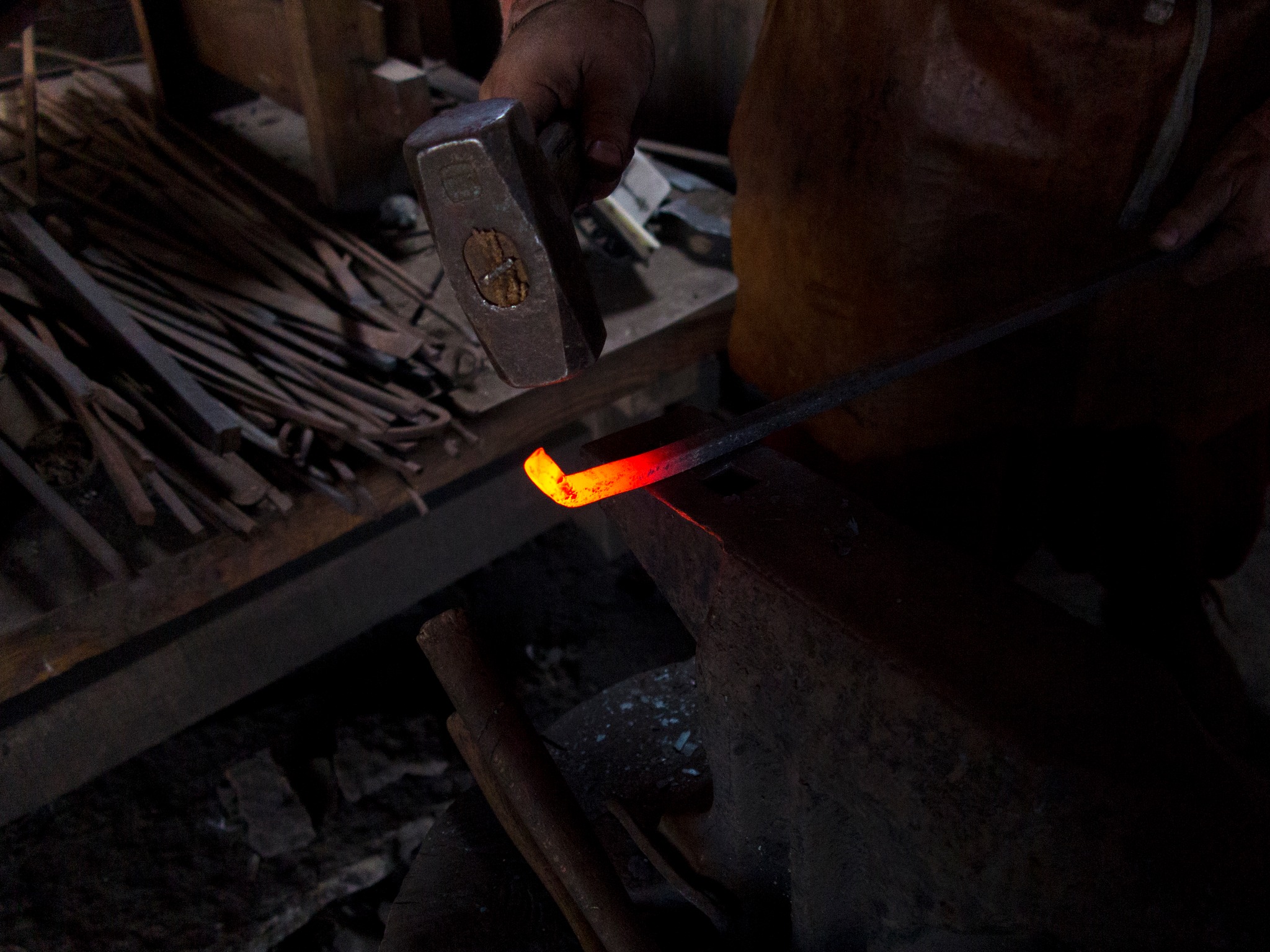
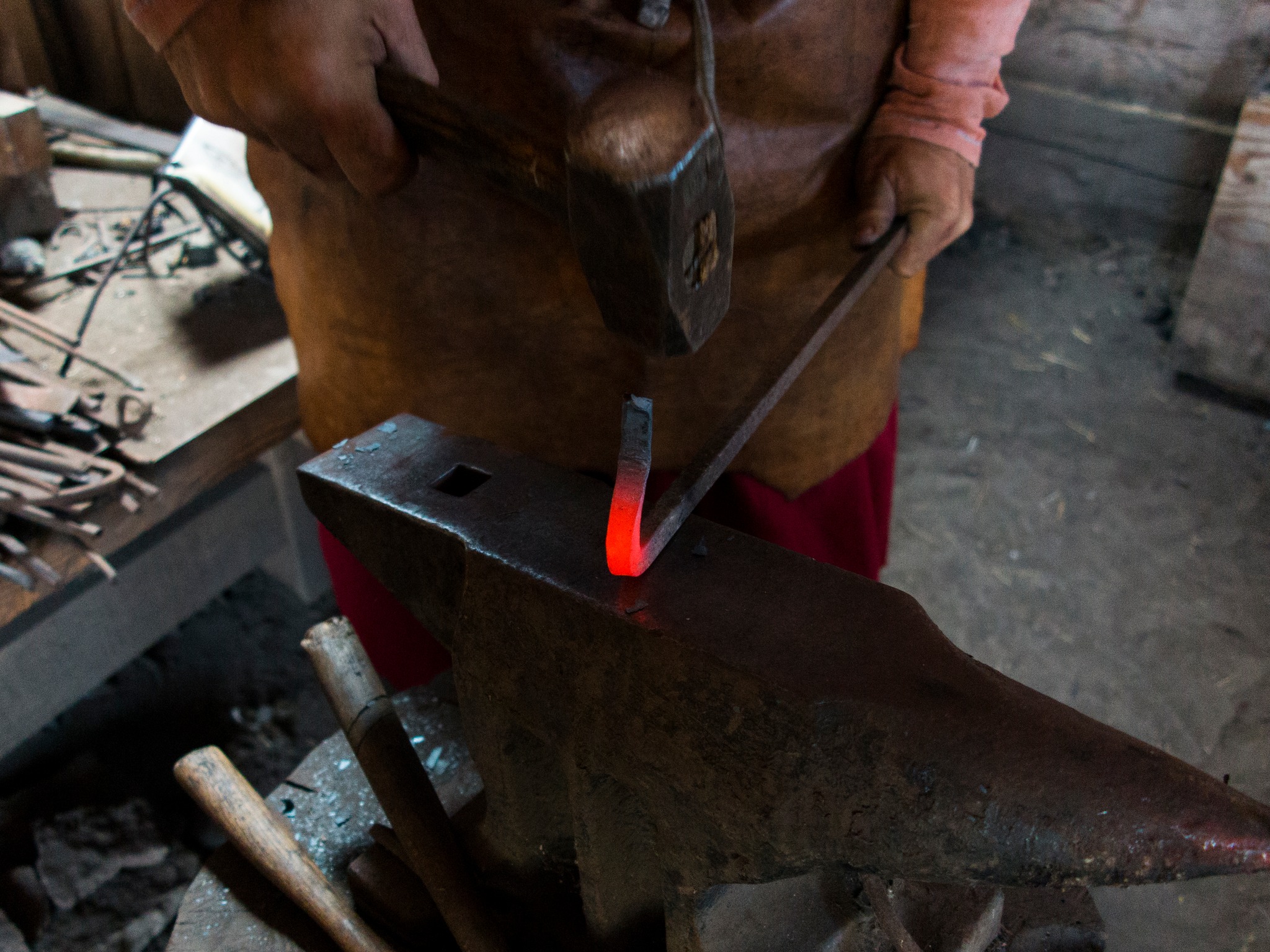
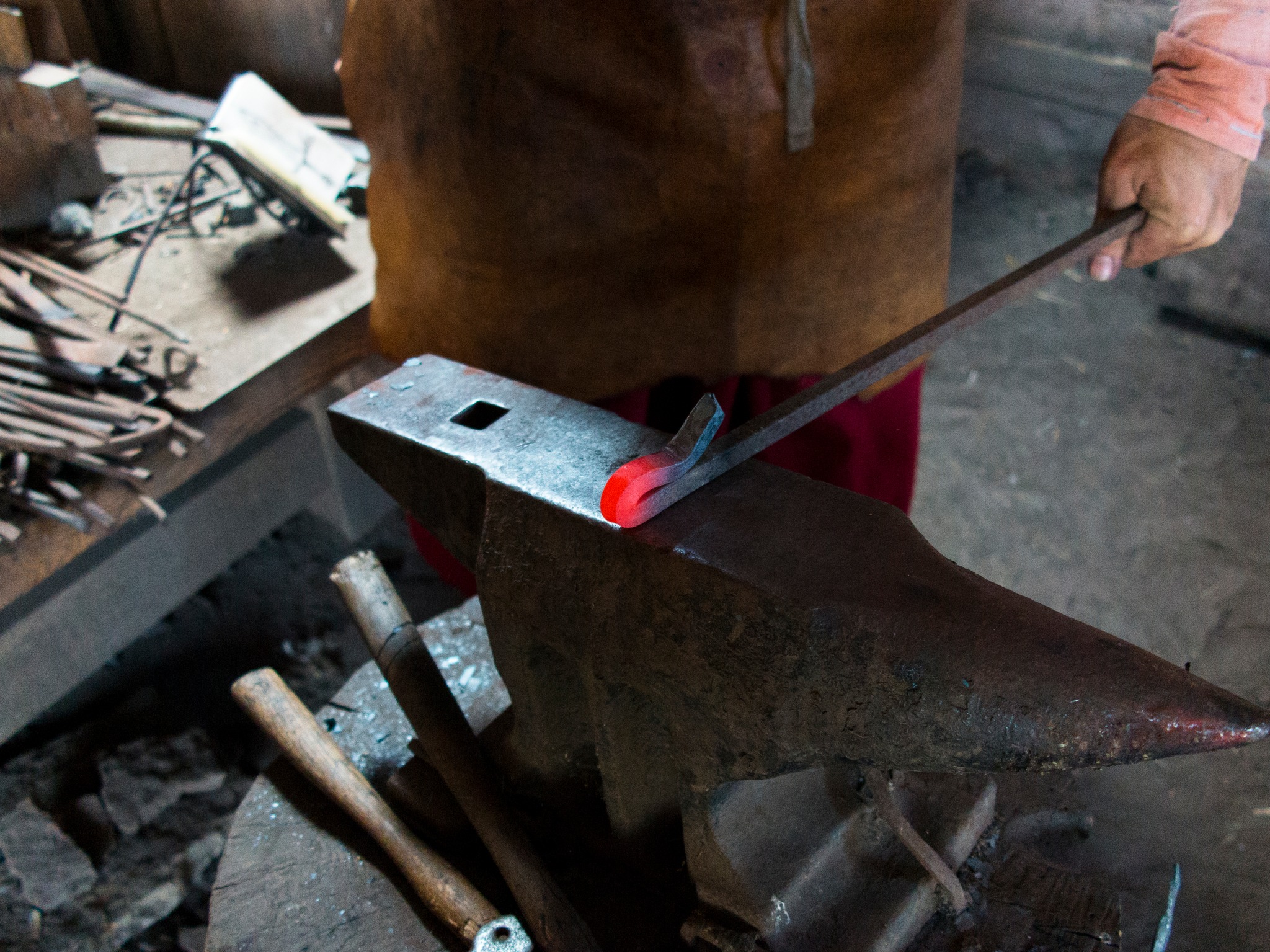
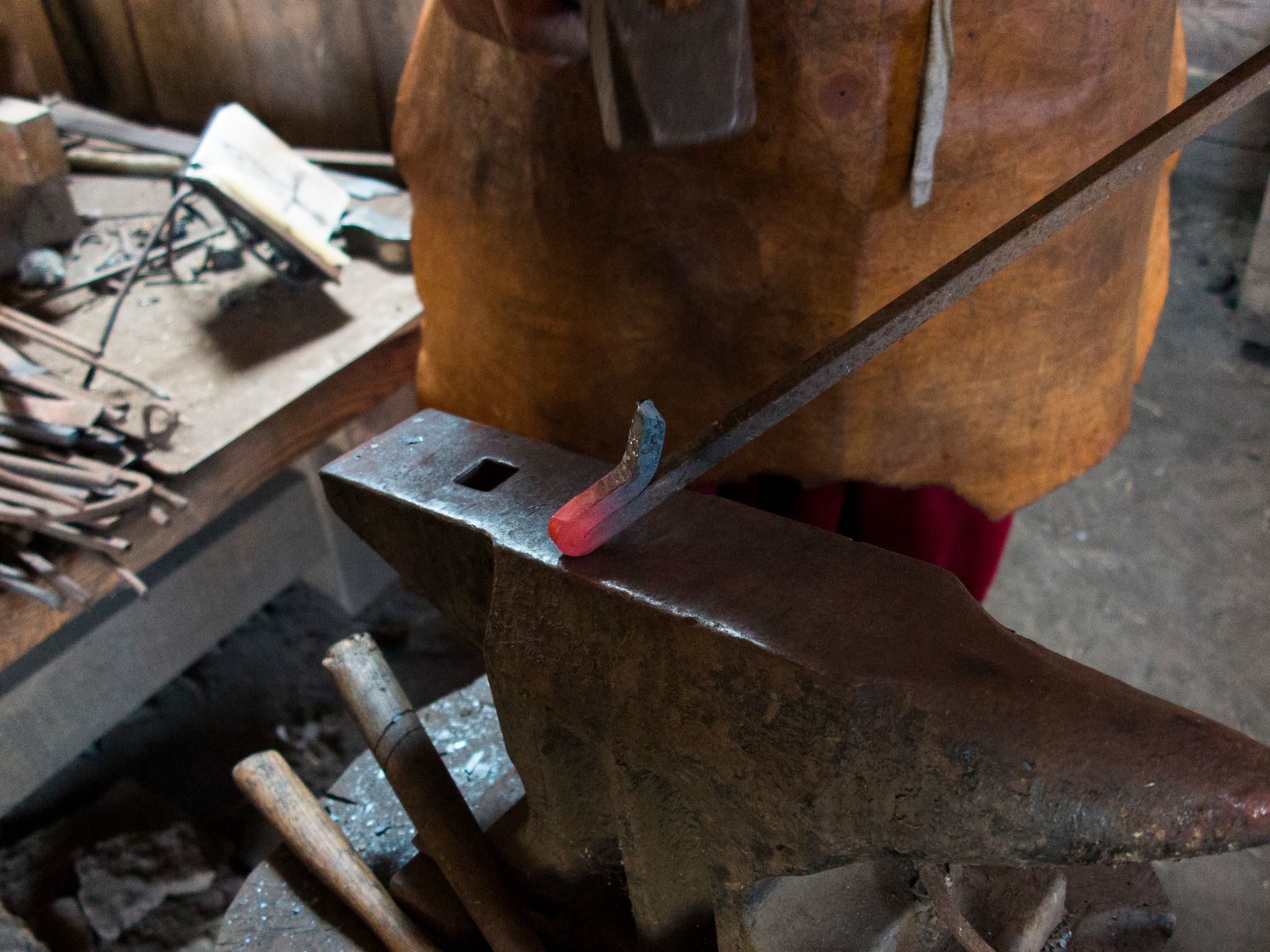
Cut the end at desired length and taper the point
After creating the rope end of the tent peg you cut the iron rod at desired length and taper the pointy end a bit. As stated before: Don't taper it too much since it will only bend when encountering rocks while being hammered down.
